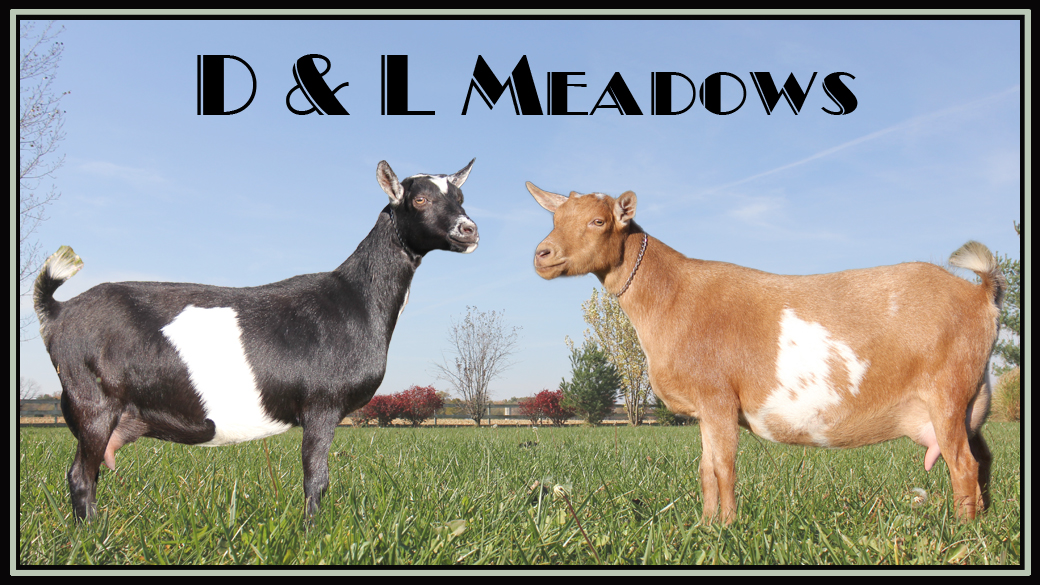
This page is intended for new goat owners. For experienced goat owners this page contains nothing new.
Bringing your Goat Home
You will be bringing your goat home either on the bottle or weaned. There is no price difference between a kid on the bottle or weaned. Your goat might be under stress due to traveling and strange surroundings and might develop a slight fever at arrival at the new home. For the first few days the kid might cry because it misses his or her buddies. If your goat kid is already weaned, you might want to give them a bottle with just water for comfort and bonding. This help bond to your new goat.
Bottle Feeding
If you choose to bottle feed your goat, we will supply the milk until
the kid is eight weeks if you are close to us. If you want to continue
to bottle them after eight weeks, (which we recommend as they will grow
better) then you will have to pay for it.
At 8 weeks of age you can wean your goat. The best way is to reduce the amount of milk you give them. It should take about a week or so to wean them off from the milk. If you stop abruptly feeding them, it will upset their digestive system. This is the schedule we use:
| Age | Number of Feedings | Amount |
|---|---|---|
| 1 week | 4-5 times a day | 1/2 - 3/4 cups |
| 3 weeks | 3 times a day | 1 - 1 1/4 cups |
| 6 weeks | 2 times a day | 1 1/2 cups |
| 8 weeks | Begin weaning | Slowly lower amount |
Feeding
Start having fresh water available to them at five weeks. Sometimes they will fill up on water and will not be interested in the bottle. Take the water away and try again in a week. You can offer them a little grain at five weeks of age, but they usually are not much interested. When they do start to eat grain only give them up to a 1 1/2 cups twice per day. You want to have hay available for them to nibble on whenever they like. They usually start nibbling on hay when they are around three weeks.
Health
-
Wethers and bucklings are prone for urinary
stones. Urinary stones are deadly. Prevention is the key.
Male goats should eat only goat feed that is prepared for them according to the correct Calcium and Phosphorus ratio.
We feed our bucks Purina grower medicated. We use to feed Southern State 17% Goat Feed,
but do not recommend it anymore since it had a lot of dust in it
which causes coughing ect. If you buy a different brand, make sure it states that it is for bucks.
Keep the wether or buckling from eating doe grain or even worse chicken food since that causes an imbalance of Calcium
and Phosphorus ratio which might result in urinary stones.We do not
recommend using a sweet feed.
Also adding Ammonium Chloride to the water does help prevent stone formation. Usually you can buy Ammonium Chloride at the local feed store. We buy the Ammonium Chloride from Bethel Feed. - CD&T shots are given at 3 weeks of age and a booster shot is given 3 to 4 weeks later, and then yearly.
- Before your goat leaves the farm, request a fecal check. Coccidiosis is on every farm. Your kid might have some coccidiosis when you purchase him or her. Coccidiosis might become a problem when the goat is stressed. Traveling and strange surroundings might cause the coccidiosis to flourish due to the immune system being down. The first 6 months goat kids are susceptible to coccidiosis. It is advised to do a fecal exam a week after you purchase your goat. You can either learn it yourself or have a veterinarian do it. Fiasco Farm is a very informative website on how to run a fecal exam. If your goat does have coccidiosis, it needs to be treated right away. Coccidiosis is a silent killer.
- Your goats will eventually get worms and most likely barber worms. It is a good practice to deworm your goat with every season change. We use safe-guard since in our area the worms are not yet resistant to this medicine. If possible, pasture rotation helps reduce the worms. If deer gets on the pasture of your goats, you might want to give your goats more often ivermectin since Meningeal worm (brain worms) can kill your goat. Another thing that also works for parasites is herbal deworm from Fir Meadows LLC. It takes a lot of dedication to keep it up, but it does help.
- Hoof trimming is another maintenance that needs to be done regularly. We hoof trim our goats every month.
- Goats do need minerals. There are two options, one is the licking block and the other is the loose minerals. In the past we tried the licking block but had no good results since some goats refused to lick it. With loose minerals, all the our goats eat from it. Beside free choice goat minerals, we also give them twice a year copper bolus.
- If goats eat certain weeds, they might have that bloated look. We give the does free choice of baking soda which helps to balance the pH in their stomach. Note, do not feed buck or wethers baking soda since that can cause formation of urinary stones.